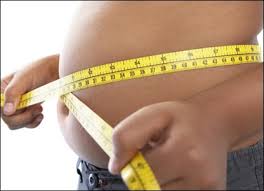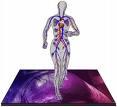Stress and weight gain? Yes they are closely associated. Recently published data from the Biological Psychiatry has closely examined the relationship.
_____________________________________________________
Background
Depression and stress promote obesity. This study addressed the impact of daily stressors and a history of major depressive disorder (MDD) on obesity-related metabolic responses to high-fat meals.
Methods
This double-blind, randomized, crossover study included serial assessments of resting energy expenditure (REE), fat and carbohydrate oxidation, triglycerides, cortisol, insulin, and glucose before and after two high-fat meals. During two separate 9.5-hour admissions, 58 healthy women (38 breast cancer survivors and 20 demographically similar control subjects), mean age 53.1 years, received either a high saturated fat meal or a high oleic sunflower oil meal. Prior day stressors were assessed by the Daily Inventory of Stressful Events.
Results
Greater numbers of stressors were associated with lower postmeal REE (p = .008), lower fat oxidation (p = .04), and higher insulin (p = .01), with nonsignificant effects for cortisol and glucose. Women with prior MDD had higher cortisol (p = .008) and higher fat oxidation (p = .004), without significant effects for REE, insulin, and glucose. Women with a depression history who also had more stressors had a higher peak triglyceride response than other participants (p = .01). The only difference between meals was higher postprandial glucose following sunflower oil compared with saturated fat (p = .03).
Conclusions
The cumulative 6-hour difference between one prior day stressor and no stressors translates into 435 kJ, a difference that could add almost 11 pounds per year. These findings illustrate how stress and depression alter metabolic responses to high-fat meals in ways that promote obesity.
_________________________________________
Stress indeed can bring about eating the wrong choice of food. Almost always we can’t avoid stress BUT we can do something about it to avoid stress induced weight gain.
It has always been my recommendation to my patients that one way to avert the temptation of eating wrong foods is to stock our pantry and refrigerator with foods that are healthy like fruits or nuts so one can prepare healthy food choices instead.

 2.5 kg on a 800 kcal/day diet. Computed tomography was used to measure abdominal subcutaneous and visceral adipose tissue, whereas total fat and regional fat (leg, arm, and trunk) were measured by dual energy X-ray absorptiometry after weight loss and 1 year following the weight loss. Because not all the subjects adhered to the 2 time/week 40 min/day exercise training during the 1-year follow-up, subjects were divided into five groups for analysis: aerobic adherers, aerobic nonadherers, resistance adherers, resistance nonadherers, and no exercise.
2.5 kg on a 800 kcal/day diet. Computed tomography was used to measure abdominal subcutaneous and visceral adipose tissue, whereas total fat and regional fat (leg, arm, and trunk) were measured by dual energy X-ray absorptiometry after weight loss and 1 year following the weight loss. Because not all the subjects adhered to the 2 time/week 40 min/day exercise training during the 1-year follow-up, subjects were divided into five groups for analysis: aerobic adherers, aerobic nonadherers, resistance adherers, resistance nonadherers, and no exercise. 

















 Know The HEALTH FACTS ... Because WEALTH THRU PERSONAL HEALTH is a COMMITMENT... NOT A CHOICE!
Know The HEALTH FACTS ... Because WEALTH THRU PERSONAL HEALTH is a COMMITMENT... NOT A CHOICE!
 The Total Number of Visitors to the site since August of 2006
The Total Number of Visitors to the site since August of 2006










